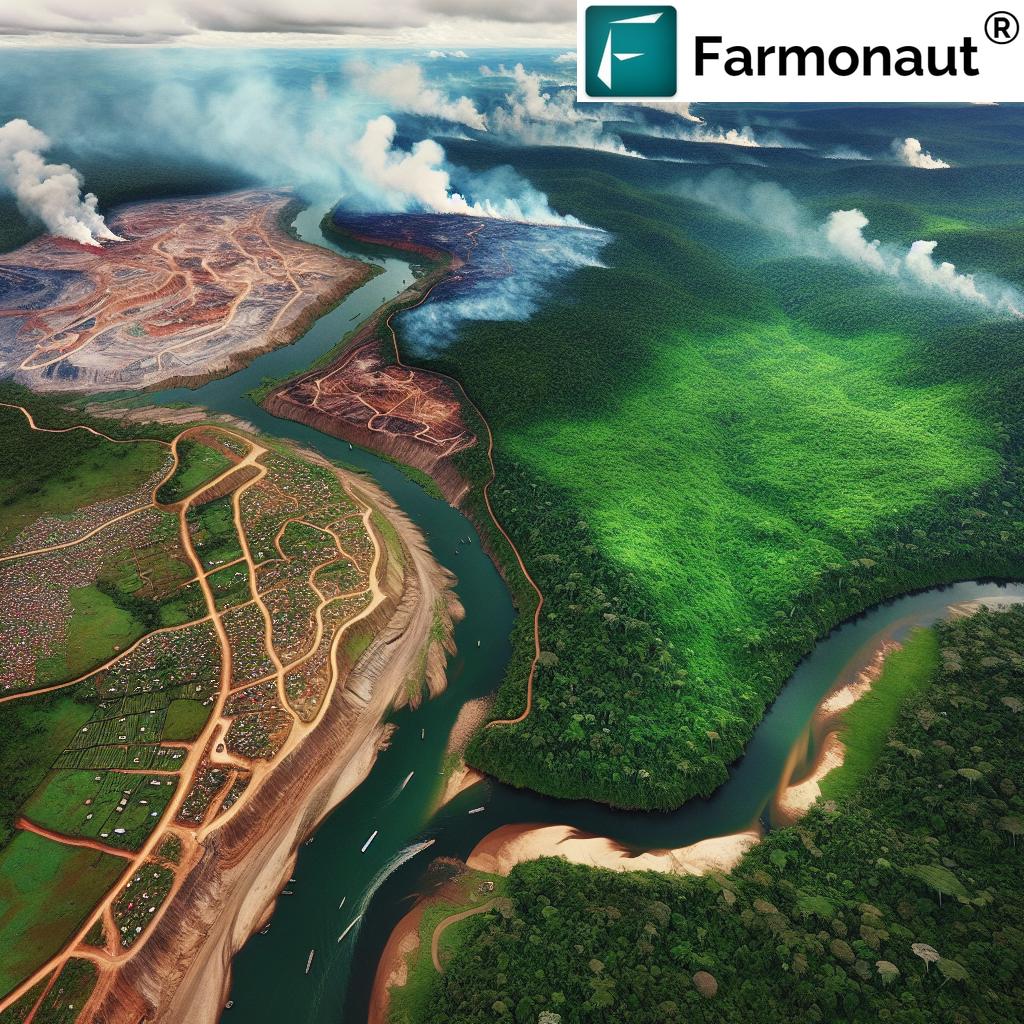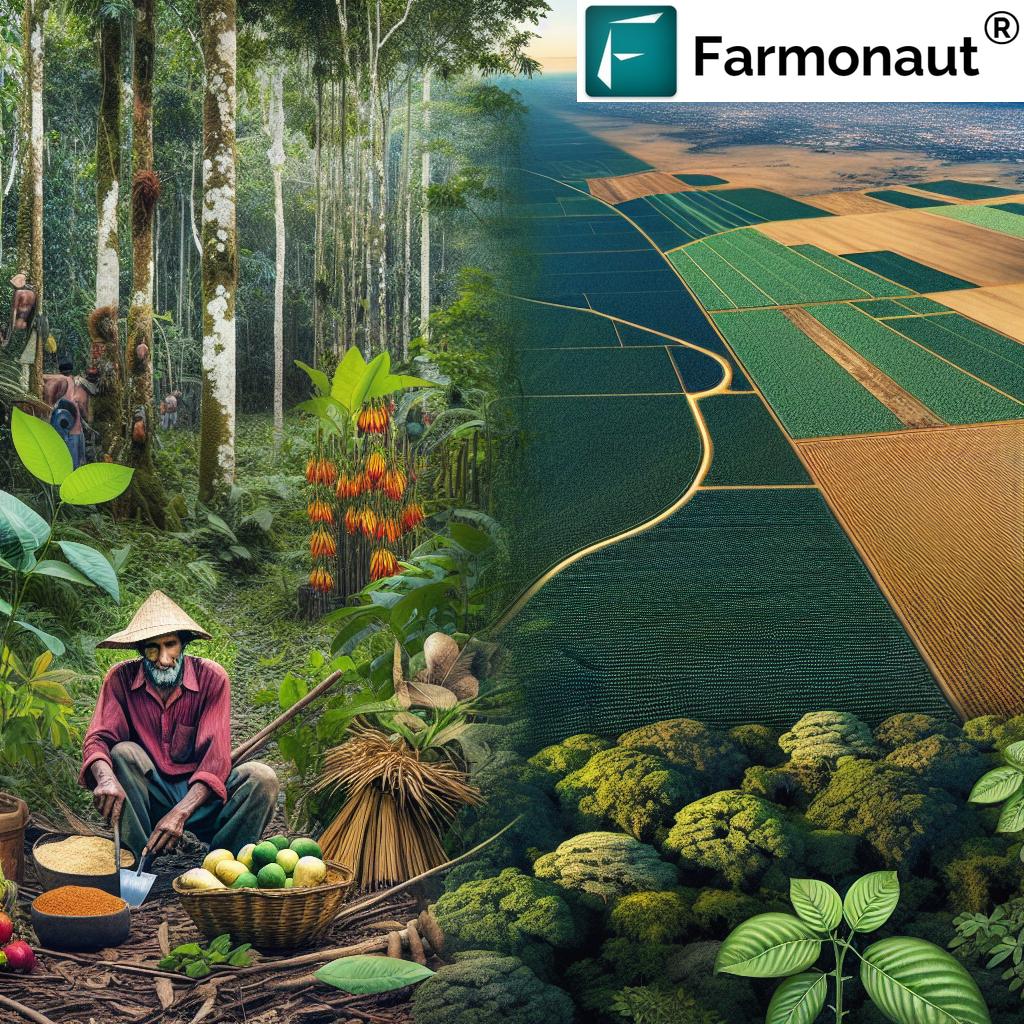Preserving the Amazon: Indigenous Territories Lead the Fight Against Deforestation in Brazil
“Indigenous territories in Brazil protect 28% of the Amazon, reducing deforestation rates by up to 66% compared to unprotected areas.”
In the heart of Brazil, a battle for the future of our planet is being waged. The Amazon rainforest, often called the “lungs of the Earth,” faces unprecedented threats from deforestation, illegal mining, and climate change. However, amid this crisis, a powerful force has emerged as the frontline defenders of this vital ecosystem: Indigenous communities. In this comprehensive exploration, we’ll delve into how Indigenous territories are leading the fight against deforestation in Brazil, and why their efforts are crucial for global environmental conservation.
The Amazon: A Global Treasure Under Threat
The Amazon rainforest is a marvel of biodiversity and a critical component of our planet’s climate system. Spanning across nine countries in South America, with the majority located in Brazil, this vast expanse of green is home to:
- Over 400 Indigenous groups
- 10% of Earth’s known species
- Approximately 390 billion trees
- 20% of the world’s freshwater
However, this ecological powerhouse is under siege. Deforestation, driven by illegal logging, agriculture expansion, and mining, threatens to push the Amazon past a tipping point from which it may never recover. The consequences of losing the Amazon would be catastrophic, not just for Brazil, but for the entire world.

Indigenous Territories: Bastions of Conservation
In the face of these challenges, Indigenous territories have emerged as crucial bulwarks against deforestation. These areas, legally recognized and protected by the Brazilian government, have proven remarkably effective in preserving the Amazon’s rich biodiversity and carbon stocks.
Let’s examine the data that underscores the importance of Indigenous lands in conservation efforts:
| Region Name | Total Area (km²) | Indigenous Territory | Estimated Annual Deforestation Rate (%) | Estimated Carbon Storage (tons/km²) | Biodiversity Index (1-10) |
|---|---|---|---|---|---|
| Capoto/Jarina | 634,915 | Yes | 0.15 | 25,000 | 9 |
| Xingu River Basin | 178,000 | Yes | 0.3 | 22,000 | 8 |
| Mato Grosso State (non-protected) | 903,357 | No | 2.8 | 15,000 | 6 |
| Pará State (non-protected) | 1,247,689 | No | 3.2 | 18,000 | 7 |
| Kayapó Territory | 102,000 | Yes | 0.4 | 24,000 | 9 |
This data clearly illustrates the stark contrast between Indigenous territories and unprotected areas. The annual deforestation rates in Indigenous lands are significantly lower, often less than 1%, compared to rates exceeding 2% in non-protected regions. Moreover, these territories maintain higher carbon storage capacities and biodiversity indices, underlining their importance in preserving the Amazon’s ecological integrity.
The Guardians of the Forest: Indigenous Conservation Practices
The success of Indigenous territories in combating deforestation is not coincidental. It stems from centuries-old traditions and a deep connection to the land. Indigenous communities employ a range of sustainable practices that have proven effective in preserving the forest:
- Traditional Knowledge: Indigenous peoples possess an intimate understanding of the forest ecosystem, passed down through generations. This knowledge informs their land management practices, allowing for sustainable resource use.
- Agroforestry: Many Indigenous groups practice agroforestry, a method that integrates trees and shrubs with crops or livestock. This approach maintains forest cover while providing food and resources.
- Territorial Patrols: Indigenous communities actively patrol their lands to detect and prevent illegal activities such as logging and mining.
- Fire Management: Traditional fire management techniques help prevent uncontrolled wildfires while promoting biodiversity.
These practices not only preserve the forest but also offer valuable lessons for sustainable land management on a broader scale.
Challenges Facing Indigenous Territories
Despite their crucial role in Amazon conservation, Indigenous territories face numerous challenges:
1. Illegal Activities
Illegal gold mining, logging, and land grabbing pose significant threats to Indigenous lands. These activities not only destroy the forest but also bring violence and social disruption to Indigenous communities.
2. Climate Change Impacts
The changing climate is altering rainfall patterns and increasing the frequency of extreme weather events in the Amazon. This affects Indigenous communities’ traditional agricultural practices and food security.
3. Political Pressures
Changes in government policies and attempts to weaken Indigenous land rights threaten the legal protections that have been crucial in preserving these territories.
4. Economic Pressures
The lure of quick economic gains from activities like mining can sometimes create divisions within Indigenous communities, challenging their traditional conservation ethos.
“The Amazon rainforest, covering 5.5 million square kilometers, is home to over 400 Indigenous groups and 10% of Earth’s known species.”
Technology and Indigenous Conservation: A Powerful Alliance
In the fight to preserve the Amazon, technology is emerging as a powerful ally for Indigenous communities. Advanced tools are enhancing their ability to monitor and protect their territories. One such innovative solution comes from Farmonaut, a company at the forefront of agricultural technology.
Farmonaut’s satellite-based crop health monitoring system, while primarily designed for agricultural use, has found a unique application in forest conservation. By leveraging multispectral satellite imagery, Indigenous groups can now monitor vast areas of their territory for signs of deforestation or illegal activities. This technology provides real-time insights into vegetation health through NDVI (Normalized Difference Vegetation Index) analysis, allowing for rapid response to any threats to the forest.
To learn more about how satellite technology is revolutionizing land use monitoring, check out this informative video:
Moreover, Farmonaut’s carbon footprinting technology can be adapted to measure and monitor carbon sequestration in Indigenous territories. This data is crucial for quantifying the environmental benefits of Indigenous conservation efforts and could potentially open up new avenues for economic support through carbon credit systems.
The Global Importance of Indigenous-Led Conservation
The conservation efforts of Indigenous communities in the Amazon have implications far beyond Brazil’s borders. Here’s why their work is crucial on a global scale:
1. Climate Change Mitigation
The Amazon rainforest acts as a massive carbon sink, absorbing billions of tons of CO2 from the atmosphere. By preserving large swaths of forest, Indigenous territories play a vital role in global climate change mitigation efforts.
2. Biodiversity Preservation
The Amazon is one of the most biodiverse regions on Earth. Indigenous territories protect countless species, many of which are yet to be discovered by science. This genetic diversity is crucial for the resilience of global ecosystems and could hold the key to future medical breakthroughs.
3. Water Cycle Regulation
The Amazon generates its own rainfall through a process called evapotranspiration. This not only sustains the forest but also influences weather patterns across South America and beyond. Preserving the forest is crucial for maintaining these hydrological cycles.
4. Cultural Heritage
Indigenous communities are the custodians of unique cultural knowledge and practices that have evolved over millennia. Their traditional ecological knowledge offers valuable insights for sustainable living in harmony with nature.

Policy Implications and the Way Forward
The success of Indigenous territories in preserving the Amazon underscores the need for policies that support and empower Indigenous communities. Here are some key policy areas that need attention:
1. Strengthening Land Rights
Ensuring robust legal protection for Indigenous territories is crucial. This includes speeding up the process of demarcating new territories and strengthening enforcement against encroachment.
2. Supporting Sustainable Economic Activities
Policies should promote sustainable economic activities within Indigenous territories. This could include support for eco-tourism, sustainable harvesting of non-timber forest products, and payments for ecosystem services.
3. Enhancing Monitoring and Enforcement
Increasing resources for monitoring and enforcing protection of Indigenous lands is essential. This could involve leveraging technologies like Farmonaut’s fleet management system to optimize patrol routes and resource allocation.
4. Promoting Indigenous Representation
Ensuring Indigenous voices are heard in policy-making processes at local, national, and international levels is crucial for developing effective conservation strategies.
5. International Cooperation
Given the global importance of the Amazon, international cooperation and support for Indigenous-led conservation efforts are essential. This could include financial support, technology transfer, and capacity building.
The Role of Technology in Supporting Indigenous Conservation
As we look to the future of Amazon conservation, technology will play an increasingly important role. Innovative solutions like those offered by Farmonaut can provide valuable support to Indigenous communities in their conservation efforts:
- Satellite Monitoring: Farmonaut’s satellite-based monitoring system can be adapted to track forest health and detect early signs of deforestation or degradation.
- AI-Powered Insights: The Jeevn AI advisory system could be customized to provide insights on sustainable forest management practices, integrating traditional knowledge with modern data analysis.
- Blockchain Traceability: Farmonaut’s blockchain-based traceability solutions could be used to certify sustainably harvested forest products, providing economic opportunities for Indigenous communities while ensuring conservation.
- Resource Management: Tools for efficient resource management can help Indigenous communities optimize their conservation efforts and sustainable economic activities.
These technological solutions, when combined with traditional Indigenous knowledge and practices, create a powerful synergy for effective forest conservation.
Conclusion: A Call to Action
The fight to preserve the Amazon is at a critical juncture. Indigenous territories have proven to be our most effective defense against deforestation, but they need support to continue their crucial work. As global citizens, we all have a stake in the future of the Amazon and a role to play in its preservation:
- Support organizations working with Indigenous communities in the Amazon
- Advocate for policies that protect Indigenous land rights and support conservation efforts
- Make sustainable choices in our daily lives to reduce pressure on the world’s forests
- Stay informed and spread awareness about the importance of the Amazon and Indigenous-led conservation
The preservation of the Amazon is not just about saving trees; it’s about safeguarding our planet’s future. By supporting Indigenous-led conservation efforts, we’re investing in a sustainable future for all. Let’s stand with the guardians of the forest and ensure that the Amazon continues to thrive for generations to come.
FAQ Section
Q: Why are Indigenous territories so effective in preventing deforestation?
A: Indigenous territories are effective because of the deep connection Indigenous peoples have with their land, their traditional knowledge of sustainable forest management, and their active role in patrolling and protecting their territories from illegal activities.
Q: How does deforestation in the Amazon affect global climate?
A: Deforestation in the Amazon releases stored carbon into the atmosphere, contributing to global warming. It also disrupts regional and global weather patterns, as the Amazon plays a crucial role in generating rainfall and regulating climate.
Q: What can individuals do to support Amazon conservation efforts?
A: Individuals can support conservation by donating to reputable organizations working in the Amazon, making sustainable consumer choices, raising awareness about the importance of the Amazon, and advocating for policies that protect the rainforest and Indigenous rights.
Q: How does technology like Farmonaut’s contribute to forest conservation?
A: Technologies like Farmonaut’s satellite monitoring and AI-powered insights can help in early detection of deforestation, efficient resource management, and providing data-driven solutions for sustainable forest management. These tools enhance the capacity of Indigenous communities and conservation organizations to protect large areas of forest effectively.
Q: What are the main threats to Indigenous territories in the Amazon?
A: The main threats include illegal logging, mining, and land grabbing; climate change impacts; political pressures that weaken land rights; and economic pressures that can lead to unsustainable resource exploitation.
Earn With Farmonaut: Join our Affiliate Program
Earn 20% recurring commission with Farmonaut’s affiliate program by sharing your promo code and helping farmers save 10%. Onboard 10 Elite farmers monthly to earn a minimum of $148,000 annually—start now and grow your income!
Farmonaut Subscriptions
For more information on Farmonaut’s innovative agricultural solutions, visit our website or download our apps:
For developers interested in integrating Farmonaut’s satellite and weather data into their own systems, check out our API and API Developer Docs.







